If you conduct a random on-the-street survey of 100 New Yorkers and ask them the question "what is lithium?" the following will occur:
- 57 will ignore you entirely
- 21 will ask for bus fare to Newark (It's always Newark. Not sure why.)
- 11 will tell you to go f########
- 9 will punch you
- 4 will say "batteries."
- 3 will say "a drug for bipolar disorder"
- 2 will vomit on you
- 1 will vomit on one of the guys who just vomited on you
That's not half bad. Seven people got the answer at least partly right and no one died. I say "only partly" because lithium does far more than stabilize sufferers of bipolar disorder or run your cordless drill. Anyone in the mood for a lithium lesson?
Didn't think so.
Too bad, you're getting one anyhow...
LITHIUM METAL DOES NOT EXIST ON EARTH IN ITS NATURAL (METALLIC) FORM
Lithium metal, a soft solid, which can be cut with a knife, is far too reactive to be found its natural (metallic) form. This is because it belongs to the Group 1 element (alkali metals) on the periodic table - the most reactive class of metals. Lithium reacts instantly with oxygen and water, even though it is the least reactive Group 1 element (Figure 1).
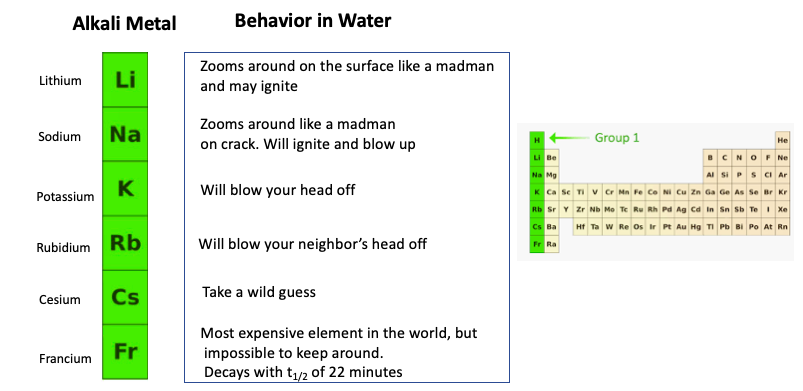
Figure 1. The alkali metals are found in the left column on the periodic table. All are too reactive to be found in their metallic forms; the reactivity increases with atomic weight (lower in the column). Image: toppr.com
LITHIUM MINERALS
All lithium is found in mineral form, usually in combination with oxygen, silicon, and aluminum. Some lithium mineral specimens are simply beautiful.

Some lithium-containing minerals. Wow. Photos: Geology.com, 911Minerals, Qnovo
OTHER MISCELLANEOUS FACTS ABOUT LITHIUM
- Lithium is the lightest metal in the world. Its density is 0.534 grams per cubic centimeter (cc). By contrast, osmium, the heaviest metal weighs 22.6 grams per cc - 45-times that of lithium.
- Lithium hydroxide (LiOH) saved the lives of the Apollo 13 astronauts because of the following chemical reaction:

It was not the lack of oxygen that endangered the lives of the crew; it was an excess of carbon dioxide (1), which is fatal at high concentrations. But CO2 reacts with the hydroxides of all alkali metals, converting the gas it to the harmless metal carbonate. Lithium hydroxide was chosen as the CO2 scrubber material because it is lighter than sodium or potassium hydroxides.
3. Although you can buy lithium metal from a chemical supplier it is immersed in mineral oil to protect it from water and oxygen. It is a bit of a pain to get rid of the mineral oil (2). Sometimes it is packed in argon instead.
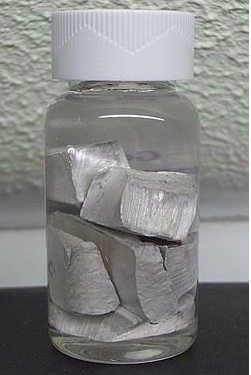
99.8% Purity Lithium Packed In Oil. Photo: Amazon.
4. Lithium used to be added to 7-Up as a hangover remedy! Betcha you didn't know that.
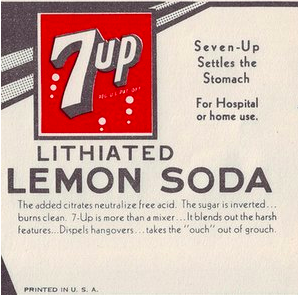
Lithium 7-Up. How crazy is this (no pun intended)? Source: Psychscenehub.com
5. If you're expecting a detailed explanation of how lithium carbonate treats bipolar disorder, forget it. It involves an exceedingly complex set of interwoven mechanisms. Here is a relatively "simple" explanation of how the drug works. Better have some lithium around before you try to read this.
6. Unlike standard alkaline batteries, lithium-ion batteries are rechargeable (3). There are both advantages and limitations to them, especially shelf life.
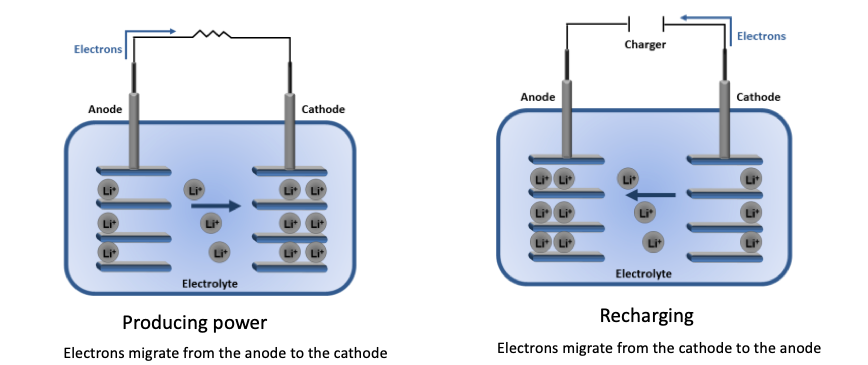
Schematic drawing of a lithium-ion battery. Image: Sustainable Nano
7. Butyllithium - A completely different beast.
Lithium is a shiny metal, at least after it is cut to expose the metal (3). Lithium hydroxide, chloride... are white solids. But when lithium is chemically bound to a carbon atom it becomes an organolithium compound these behave very differently from either lithium metal or its compounds.
One organolithium is called t-butyllithium, which is sold in a sealed, air-free bottle dissolved in hexane. It must not be exposed to water or oxygen or it catches fire immediately so it is transferred from the bottle by syringe. No matter how careful you are the tip of the needle will always catch fire. If you're even less careful you will have a nice little fire on your hands. Like this...
https://www.youtube.com/watch?v=e9VNaUY-ri4
t-Butyllithium is dangerously pyrophoric (catches on fire spontaneously), so much so that it was responsible for the death of a UCLA research associate in 2014 when it spilled on her lab coat and set her on fire.
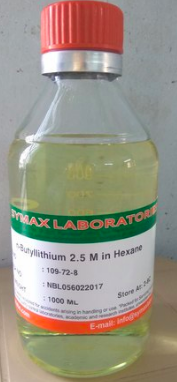
t-Butyllithium in hexane. Handle with care.
Hope you enjoyed the lithium lesson. Or your lithium.
NOTES:
(1) Carbon dioxide a byproduct of human cellular respiration. It is expelled with every breath.
(2) Mineral oil is a misnomer. There are no minerals in mineral oil. Instead, it is a mixture of hydrocarbons of various chain lengths and is chemically inert.
(3) The names can be confusing. Lithium and lithium-ion batteries are different. Even though your phone is powered by a "lithium battery" this is not technically true. It is really a lithium-ion battery, which can (obviously) be recharged. Apple gives a nice explanation of the differences.




